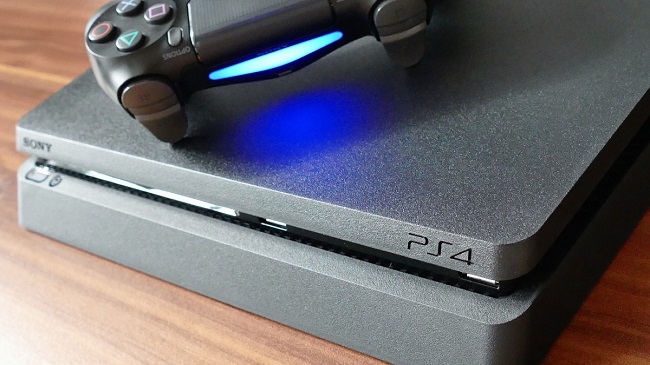The PS4 Safe Mode is a useful feature that allows users to troubleshoot and resolve various issues with their PlayStation 4 console.
If you’re experiencing problems with system updates, controller connectivity, or other software-related issues, the Safe Mode can be a valuable tool for resolving these issues.
In this detailed, SEO-optimized article, we will provide you with a comprehensive guide on how to navigate the PS4 Safe Mode, perform system software updates, connect a USB storage device, troubleshoot controller connectivity problems, and understand the functions and benefits of the Safe Mode itself.

Contents
What is PS4 Safe Mode?
The PS4 Safe Mode is a special startup mode designed to help users troubleshoot and fix issues with their PlayStation 4 console.
It provides a range of options to resolve software-related problems, such as system updates, corrupted data, and other software malfunctions.
The Safe Mode can be accessed when the PS4 encounters certain errors during startup or when specifically initiated by the user.
Accessing PS4 Safe Mode
To access the PS4 Safe Mode, follow these steps:
- Power Off the PS4: Make sure your PS4 console is completely powered off by pressing and holding the power button until it beeps and the system shuts down.
- Enter Safe Mode: Press and hold the power button on the console. After the initial beep, continue holding the power button until you hear a second beep, approximately seven seconds later. This will boot the PS4 into Safe Mode.
- Connect a Controller: Connect a controller to the PS4 using a USB cable. Make sure the cable is firmly connected to both the controller and the console.
- Navigate Safe Mode Options: Once in Safe Mode, you can navigate the options using the connected controller’s D-pad and buttons.
Updating System Software in Safe Mode
To update the system software in PS4 Safe Mode, follow these steps:
- Enter Safe Mode: Follow the steps mentioned earlier to enter Safe Mode.
- Select “Update System Software”: Use the D-pad to highlight the “Update System Software” option and press the X button on the controller.
- Choose Update Method: Select the desired update method. You can update the system software via the internet or by using a USB storage device. If you choose the internet option, make sure your PS4 is connected to the internet.
- Follow On-screen Instructions: Follow the prompts and on-screen instructions to initiate and complete the system software update process.
Connecting a USB Storage Device in Safe Mode
To connect a USB storage device in PS4 Safe Mode, follow these steps:
- Enter Safe Mode: Access the PS4 Safe Mode by following the earlier mentioned steps.
- Select “Initialize PS4 (Reinstall System Software)”: Use the D-pad to highlight the “Initialize PS4 (Reinstall System Software)” option and press the X button on the controller.
- Connect a USB Storage Device: Connect a USB storage device with the latest PS4 system software update file (available on the official PlayStation website) to one of the USB ports on the PS4.
- Follow On-screen Instructions: Follow the prompts and on-screen instructions to initialize the PS4 and reinstall the system software from the USB storage device.
Troubleshooting Controller Connectivity Issues in Safe Mode
If you’re experiencing controller connectivity issues in PS4 Safe Mode, try the following steps:
- Ensure a Wired Connection: Make sure the controller is connected to the PS4 using a USB cable.
- Try Different USB Ports and Cables: If one USB port or cable doesn’t work, try another port or cable to ensure the connection is stable.
- Reset the Controller: Locate the small reset button on the back of the controller, insert a paperclip or similar tool into the hole, and press the button for a few seconds. Then, reconnect the controller to the PS4 using a USB cable.
- Contact Support: If the controller connectivity issue persists, it may indicate a hardware problem. Contact PlayStation support or consult a professional technician for further assistance.
Understanding the Functions of PS4 Safe Mode
The PS4 Safe Mode provides several useful options for troubleshooting and resolving issues. Here are some of the key functions:
- Restart System: This option restarts the PS4 normally, exiting Safe Mode.
- Change Resolution: If you encounter display issues, such as a blank screen or incompatible resolution, this option allows you to change the display resolution settings.
- Rebuild Database: Selecting this option can help improve system performance by organizing and optimizing the data on your PS4.
- Initialize PS4: This option restores the PS4 to its default factory settings, deleting all user data and settings. Use this option as a last resort, as it erases all data from the console.
- Restore Default Settings: This option resets the PS4’s settings to their default values, without deleting user data.
- Initialize PS4 (Reinstall System Software): This option reinstalls the PS4 system software using a USB storage device.
It’s essential to understand that some options in Safe Mode can result in data loss, so use them cautiously and only when necessary.
In conclusion
The PS4 Safe Mode provides a range of options to troubleshoot and fix software-related issues on your PlayStation 4 console.
By following the steps mentioned in this guide, you can update system software, connect a USB storage device, troubleshoot controller connectivity problems, and understand the functions and benefits of the Safe Mode.
If you encounter persistent issues or need further assistance, consider contacting PlayStation support for professional guidance.






























